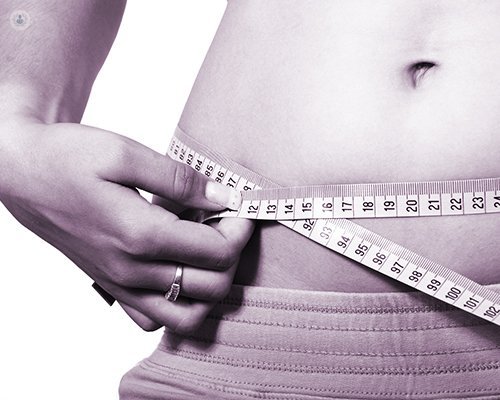Laser liposuction: The smart lipo
Written in association with:Laser liposuction, also referred to as laser lipolysis, is a technique used to reduce body mass through a minimally invasive procedure that eliminates adipocytes and tightens the skin. It is a treatment to remove fatty tissue which consists of applying an optical fibre that carries laser light through the skin. The laser destroys the fatty tissue and significantly contracts the skin.

What are the differences between "classic liposuction" and laser lipolysis?
Laser liposuction is a procedure used for performing touch-ups on areas where liposuction had been performed previously, leaving irregularities or causing the skin to sag after surgery. Traditional liposuction is a much more aggressive procedure as the destruction mechanism of adipocytes through the cannula produces more trauma and bleeding.
Laser lipolysis promotes coagulation of the small blood vessels (reducing bleeding and bruising) causing less physical trauma during the procedure. This is the main advantage of laser lipolysis over classic liposuction, as it involves a much quicker and less painful recovery process because less inflammation is caused. Furthermore, areas that are more difficult to access and treat with traditional liposuction can by treated by laser lipolysis. This is because laser lipolysis causes immediate contraction of the skin and it leaves less irregularities in the postoperative period. Additionally, treatment on the inner thighs or arms is more affordable with laser lipo, as are areas of the abdomen that are affected significantly by sagging, as well as dewlaps, bra rolls and others. The most typical areas to correct and remodel with laser liposuction are: the love handles, and gluteal and abdominal region. The main characteristic of laser lipolysis is its high degree of satisfaction in patients and its practitioners.
Can laser lipolysis be used on skin with stretch marks?
Laser lipolysis is ideal for performing volume corrections in devitalised and striated skin such as the abdominal region after pregnancy or the inner thighs. Thanks to the cutaneous contraction effect caused by the release of heat shock proteins that occurs during treatment, lipolysis gives the possibility of body remodelling for older patients who are more prone to flaccidity due to thinning of the dermis and septa.
What type of anaesthesia does laser liposuction require?
Usually, laser liposuction requires local anaesthesia with or without sedation, although it depends on the areas being treated. It allows an almost immediate return to normal routine, within 24 hours. There may be the discomfort of stiffness in the following two to three days but this disappears in in less than a week. The compressive garment can be removed for sleep in four to seven days. The post-operative care of patients who have had laser lipolysis is much simpler than classic liposuction.
How is laser liposuction performed?
Laser lipolysis is performed by introducing a 1mm-wide flexible cannula through a very small incision. The laser probe goes through the cannula and laser light is conducted intradermally. The laser light destroys fat and the fibrous septa of the areolar fat and contracts the skin, resulting in body contouring.
Which areas of the body is laserlipo most effective?
It's an effective treatment for small areas such as the jowls, inner arms, inner thighs, or lower abdomen, where the retraction of the skin is very important for the results. It's also highly recommended to retouch previous liposculptures that have begun to sag. It can also be used as a complement to classic liposuction.
How does it work?
The equipment used for laser liposuction, also called laser lipo, laser lipolysis or laser sculpture, effectively destroys fat tissue thanks to its photo-thermal effect and at the same time stimulates neocollagenesis, thanks to the heat it applies on a hypodermic level.
What are the advantages of laser liposuction?
- The contraction effect of the tissues prevents post-liposculpture flaccidity and contour deformities, generating a more homogeneous contraction of the entire skin.
- Unlike in traditional liposuction, in laser lipolysis there is a "melting" effect that does not impact the integrity of other tissue structures.
- The laser’s coagulation effect on the microcirculation of the area effectively prevents haematomas and bleeding.
- As the treatment is less aggressive, recovery time is minimised.
- The incision is small.
- Procedures of low or medium fat extraction or procedures on specific or restricted areas can be performed under local anaesthesia.
- Laser liposuction or laser lipolysis is a technique that can be used in any area of the body.
- It allows a refined touch-up of unsatisfactory results from previous liposuction procedures.
- For large volume treatments, laser lipolysis can be used in combination with conventional liposuction to ensure fast healing in the treated area.
Considering lipolaser? Arrange a consultation with one of Top Doctors specialist aestheticians today.


